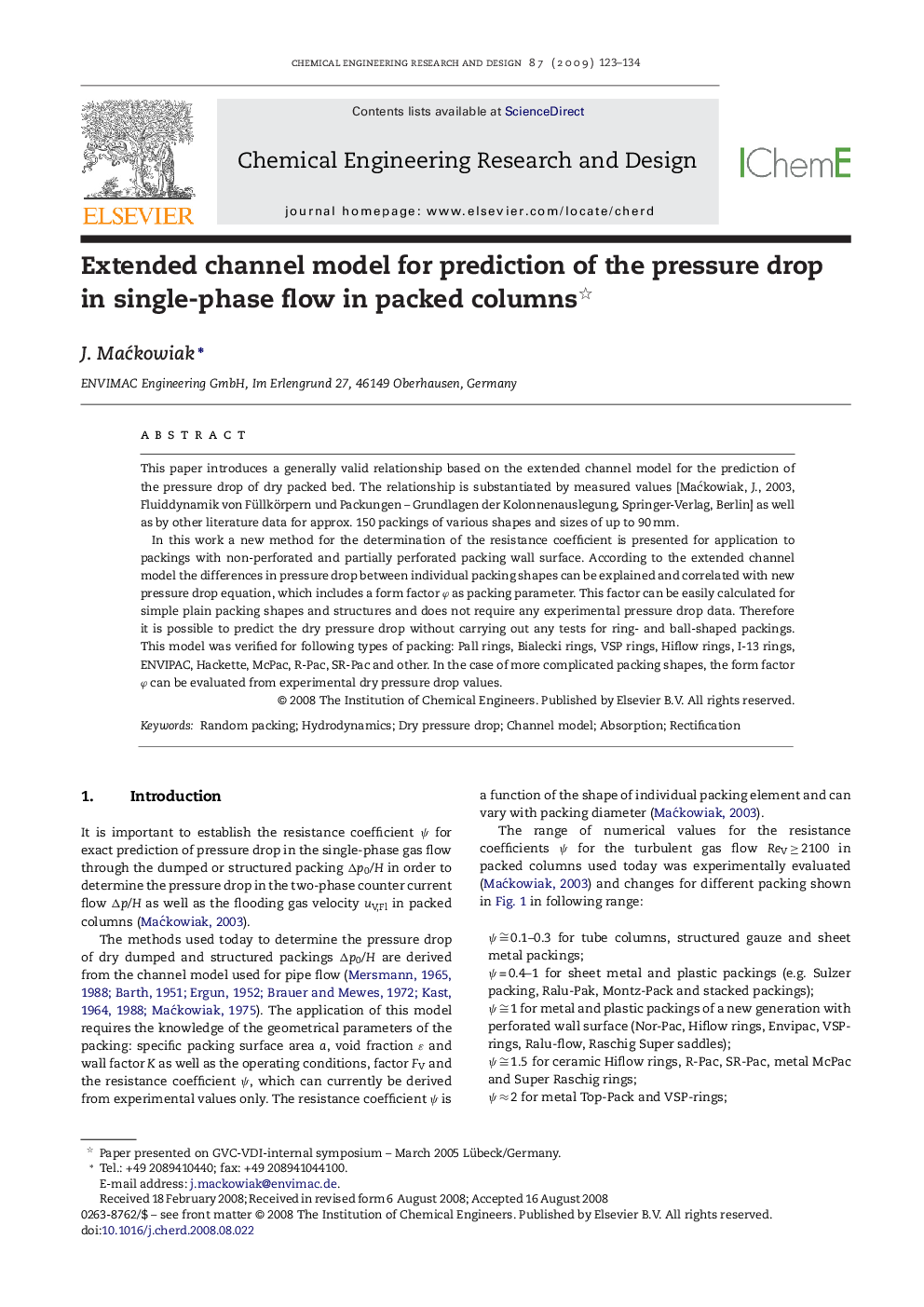| Article ID | Journal | Published Year | Pages | File Type |
|---|---|---|---|---|
| 621619 | Chemical Engineering Research and Design | 2009 | 12 Pages |
This paper introduces a generally valid relationship based on the extended channel model for the prediction of the pressure drop of dry packed bed. The relationship is substantiated by measured values [Maćkowiak, J., 2003, Fluiddynamik von Füllkörpern und Packungen – Grundlagen der Kolonnenauslegung, Springer-Verlag, Berlin] as well as by other literature data for approx. 150 packings of various shapes and sizes of up to 90 mm.In this work a new method for the determination of the resistance coefficient is presented for application to packings with non-perforated and partially perforated packing wall surface. According to the extended channel model the differences in pressure drop between individual packing shapes can be explained and correlated with new pressure drop equation, which includes a form factor φ as packing parameter. This factor can be easily calculated for simple plain packing shapes and structures and does not require any experimental pressure drop data. Therefore it is possible to predict the dry pressure drop without carrying out any tests for ring- and ball-shaped packings. This model was verified for following types of packing: Pall rings, Bialecki rings, VSP rings, Hiflow rings, I-13 rings, ENVIPAC, Hackette, McPac, R-Pac, SR-Pac and other. In the case of more complicated packing shapes, the form factor φ can be evaluated from experimental dry pressure drop values.
